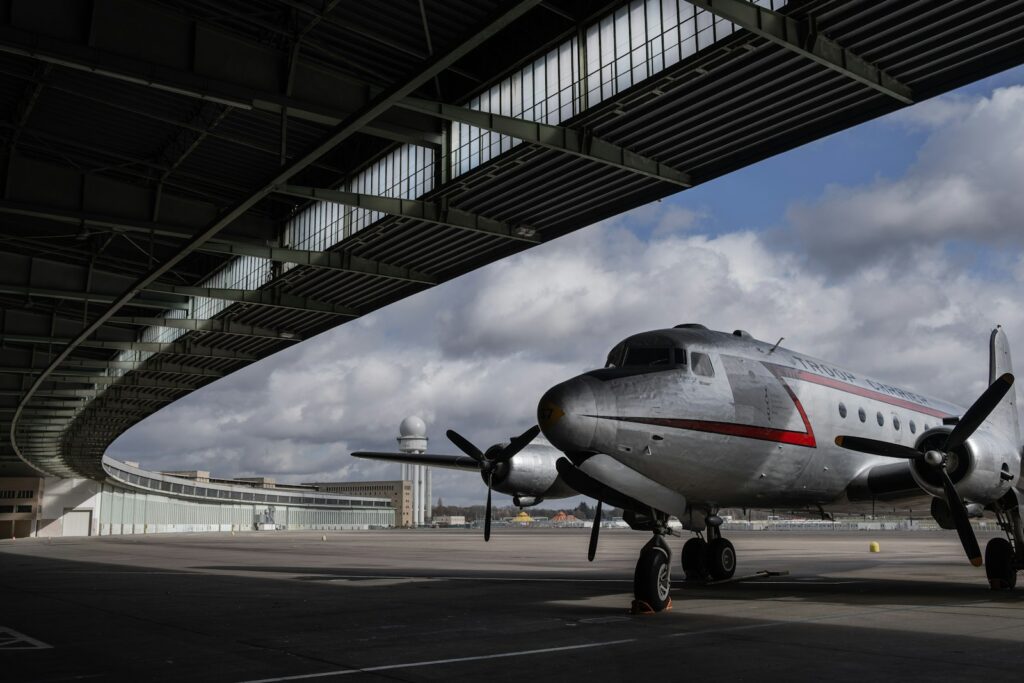Berlin, a city teeming with history, culture, and innovation, is more than just Germany’s bustling capital. It serves as a significant gateway to the world, drawing in millions of travelers annually who are eager to glimpse its iconic landmarks, from the Brandenburg Gate to remnants of the Berlin Wall. Yet, for many visitors and even locals, a question lingers in the air: “How many airports in Berlin exist to cater to such a vast influx of passengers?” The answer is not as straightforward as one might expect, shrouded in a fascinating blend of historical evolution, political intrigue, and modern-day logistics.
As we delve into the aviation landscape of Berlin, you’ll uncover a story of transformation reflective of the city’s own tumultuous past. From Cold War-era airports that symbolized division to the recent emergence of state-of-the-art facilities designed to redefine international travel, each airport has its unique tale to tell. Join us on this journey as we unravel the aviation mystery of Berlin, exploring not just the numbers but the rich narratives behind them.
Evolution of Berlin’s Aviation Infrastructure
Berlin’s aviation infrastructure has undergone a remarkable evolution over the years, shaped by historical events and changing political landscapes. Understanding this evolution is crucial to unraveling the mystery of how many airports exist in Berlin today.
One of the most significant chapters in Berlin’s aviation history is the story of Tempelhof Airport. Built in the 1920s, Tempelhof played a pivotal role during World War II and the subsequent Cold War era. It served as a lifeline during the Berlin Airlift, when Allied forces supplied West Berlin with essential goods amidst a Soviet blockade. Today, Tempelhof stands as a symbol of resilience and historical significance, no longer functioning as a commercial airport but transformed into a public park.
Historical Significance of Tempelhof Airport
Tempelhof Airport holds immense historical significance for Berlin and its residents. The airport witnessed some of the most critical moments in German history, including its role as an airfield for Nazi Germany during World War II. However, it was during the Cold War that Tempelhof truly became an emblematic site.
The Berlin Airlift from 1948 to 1949 was a defining moment for Tempelhof Airport. As Soviet forces blockaded West Berlin, cutting off all land and water access, Allied forces launched an unprecedented airlift operation to supply essential goods to the city’s inhabitants. Day after day, cargo planes landed at Tempelhof, delivering food, fuel, and other necessities to sustain West Berliners.
This extraordinary effort not only showcased international solidarity but also demonstrated Tempelhof’s strategic importance as an airfield capable of handling such large-scale operations. The airport became synonymous with hope and resilience during those challenging times.
Tegel Airport: Gateway to West Berlin
Another key player in Berlin’s aviation landscape is Tegel Airport. Located in the northwest of the city, Tegel served as the primary gateway to West Berlin during the Cold War era. Its proximity to the city center made it a convenient choice for travelers.
Tegel Airport was originally built in response to increasing air traffic and the need for a modern facility. It opened its doors in 1948 and quickly became an essential hub for both domestic and international flights. Over the years, Tegel underwent several expansions and renovations to accommodate growing passenger numbers.
With its distinctive hexagonal terminal design, Tegel Airport became an iconic symbol of West Berlin’s resilience and determination. However, as Berlin moved towards reunification, plans were set in motion to replace Tegel with a more modern airport that could cater to the city’s evolving needs.
Schoenefeld Airport: East Berlin’s Aviation Hub
While Tempelhof and Tegel represented West Berlin’s aviation infrastructure, Schoenefeld Airport played a crucial role on the eastern side of the city during the Cold War era. Located southeast of central Berlin, Schoenefeld served as East Germany’s main international airport.
Originally built in 1934, Schoenefeld underwent significant expansions throughout its history. It served as an important transportation hub for travelers from Eastern Bloc countries and other parts of Europe.
After German reunification in 1990, Schoenefeld underwent further transformations as plans were made to integrate it into a unified airport system for all of Berlin.
The Unification: Berlin Brandenburg Airport
The culmination of Berlin’s airport evolution is the long-awaited opening of Berlin Brandenburg Airport (BER). This state-of-the-art facility was intended to replace both Tegel and Schoenefeld, bringing together the city’s aviation infrastructure under one roof.
However, the road to BER’s completion was marred by numerous delays and controversies. Originally scheduled to open in 2011, the airport faced significant technical and construction challenges, leading to multiple postponements.
Finally, in October 2020, Berlin Brandenburg Airport welcomed its first passengers. With its modern design and advanced facilities, BER aims to provide a seamless travel experience for millions of visitors coming to Berlin.
Challenges and Controversies in Berlin’s Airport Development
The development of Berlin’s airports has not been without its fair share of challenges and controversies. The delayed opening of BER is perhaps the most prominent example.
The initial plans for BER were ambitious, aiming to create a world-class airport that would serve as a major European hub. However, construction issues, technical problems with fire safety systems, and mismanagement led to significant setbacks.
The prolonged delays not only caused frustration among travelers but also had financial implications for the city. The cost overruns associated with the project were substantial.
A Look into Berlin’s General Aviation Airports
Beyond the commercial airports catering to passenger flights, Berlin is also home to several general aviation airports. These smaller airfields primarily serve private aircraft owners, flight schools, and recreational pilots.
One such airport is Schönhagen Airport (EDAZ), located just outside of Berlin. It offers facilities for general aviation enthusiasts and hosts various events throughout the year. Another notable general aviation airport is Strausberg Airport (EDAY), situated east of central Berlin.
Future Prospects and Expansion Plans
Berlin’s aviation landscape continues to evolve as new opportunities and challenges arise. With the opening of BER, the city aims to position itself as a major European aviation hub.
Expansion plans for BER include the construction of a new terminal and additional infrastructure to accommodate increasing passenger numbers. The airport’s strategic location in Europe makes it an attractive choice for airlines looking to establish new routes.
Sustainability Initiatives in Berlin’s Airports
As the world becomes increasingly conscious of environmental issues, Berlin’s airports are also taking steps towards sustainability. Efforts are being made to reduce carbon emissions, improve energy efficiency, and promote eco-friendly practices.
For example, BER has implemented measures such as solar panels, rainwater harvesting systems, and energy-efficient lighting. These initiatives aim to minimize the airports’ ecological footprint while providing a more sustainable travel experience.
Conclusion: Navigating the Dynamic Skies of Berlin
In conclusion, Berlin’s aviation landscape is a testament to its rich history and ever-changing dynamics. From Tempelhof Airport’s historical significance to Tegel Airport’s role as West Berlin’s gateway and Schoenefeld Airport’s importance in East Berlin, each airport tells a unique story.
The long-awaited opening of Berlin Brandenburg Airport marks a new chapter in the city’s aviation history. Despite challenges and controversies along the way, Berlin continues to strive towards creating an efficient and sustainable aviation infrastructure that can cater to its growing number of visitors.
So next time you find yourself wondering how many airports exist in Berlin, remember that it is not just about numbers but about unraveling the fascinating narratives behind them.



